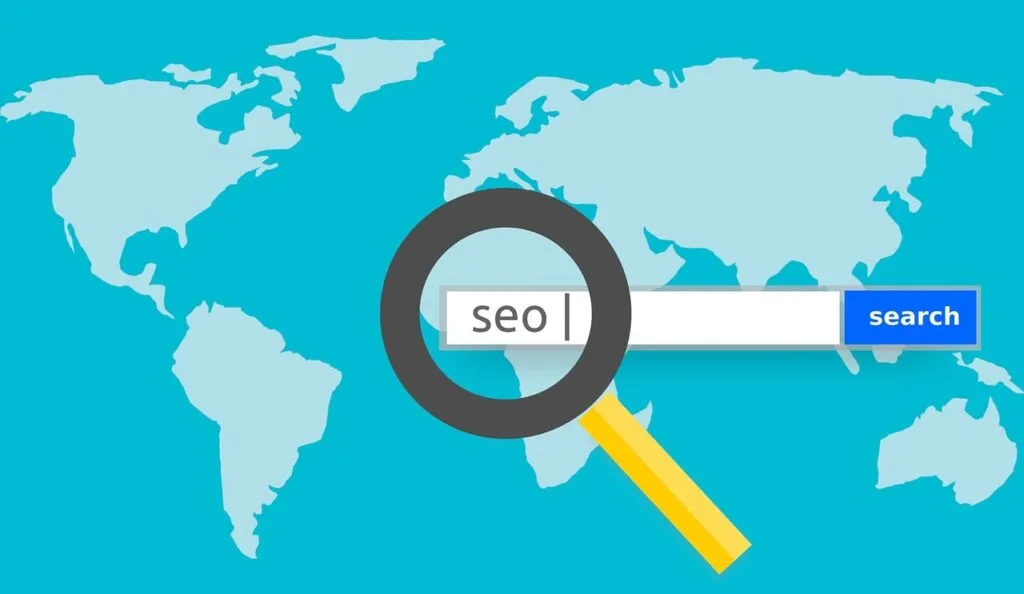This Article has been revised, edited and added to, by Poulomi Chakraborty.
In today’s digital age, information travels at the speed of light, and the realm of biotechnology is no exception. Biotech startups, in particular, face the challenge of not only developing groundbreaking innovations but also effectively communicating their research and findings to a broader audience. This is where the power of social media platforms like Twitter comes into play.
In this extensive guide, we will delve deep into Twitter’s role in disseminating scientific SEO (Search Engine Optimization) content for biotech startups. From understanding the basics to implementing advanced strategies, we’ll equip you with the knowledge you need to leverage Twitter effectively for your biotech venture.
Introduction
The Crucial Role of Social Media in Biotech

In the dynamic landscape of biotechnology, staying connected with the global scientific community is paramount. Traditionally, scientific research and breakthroughs were shared through conferences, publications, and peer-reviewed journals. While these avenues remain significant, they often entail lengthy processes and may not be suited for the rapid pace of biotech startups. This is where social media, and specifically Twitter, emerges as a game-changer.
Twitter offers an agile platform that enables biotech startups to disseminate their scientific content, engage with experts, and showcase their innovations to a diverse and expansive audience. The real-time nature of Twitter means that breaking news and research findings can be shared instantly, fostering collaboration and knowledge exchange within the biotech community.
Twitter as a Powerful Communication Tool
Twitter has evolved from a mere microblogging platform into a versatile communication tool that transcends borders and disciplines. Its 330 million monthly active users span a wide spectrum of industries, including science and technology. Biotech startups can leverage Twitter’s unique features, such as hashtags, multimedia content, and real-time updates, to amplify their scientific SEO content.
In this comprehensive guide, we will explore how biotech startups can harness the potential of Twitter to not only disseminate their scientific SEO content but also engage with influencers, investors, and the broader scientific community.
Building Your Twitter Foundation
Creating an Engaging Twitter Profile
Your Twitter profile serves as the digital face of your biotech startup. It’s the first impression you make on potential followers, collaborators, and investors. To ensure you stand out in the crowded Twitterverse, here are some key elements to consider when building your profile:
Profile Picture
Your profile picture should be a clear, high-resolution image of your logo or a professional headshot if you’re a personal brand. This image will be displayed prominently on your profile, tweets, and interactions.
Cover Photo
The cover photo is an opportunity to showcase your biotech startup’s personality and branding. Consider using an image that represents your field of expertise or a visually appealing design that complements your profile picture.
Bio
Craft a concise and compelling bio that encapsulates your startup’s mission and expertise. Include relevant keywords to improve discoverability in Twitter searches. You have 160 characters, so make every word count.
Location and Website
Specify your startup’s location and provide a link to your website. This adds credibility and makes it easier for interested parties to learn more about your work.
Pinned Tweet
Consider pinning a tweet that highlights a recent achievement, a key research finding, or a message that embodies your startup’s core values. Pinned tweets stay at the top of your profile for increased visibility.
Crafting a Captivating Bio
Your Twitter bio is more than just a brief introduction; it’s a strategic tool for attracting the right audience. Here’s how to craft a captivating bio:
- Clarity: Clearly state what your biotech startup does. Avoid jargon that may confuse newcomers to your field.
- Keywords: Incorporate relevant keywords related to biotech, your niche, or research areas. This helps your profile appear in Twitter searches.
- Achievements: Highlight notable achievements, such as awards, publications, or partnerships.
- Call to Action (CTA): Include a CTA that encourages visitors to follow, visit your website, or engage with your content.
- Emojis: Emojis can add personality to your bio but use them sparingly and ensure they’re relevant.
- Hashtags: Use industry-related hashtags to demonstrate your involvement in ongoing discussions.
Your Twitter bio is a dynamic component of your profile. As your startup evolves and achieves milestones, don’t hesitate to update it to reflect your progress and new goals.
Content Creation for Biotech Startups

In the fast-paced world of biotechnology, effective content creation on Twitter can be the key to capturing and retaining your audience’s attention. Crafting tweets that are both scientifically sound and engaging requires a delicate balance. Here’s how to create compelling content for your biotech startup’s Twitter account:
The Art of Crafting Scientific Tweets
- Clarity is Key: When tweeting about scientific discoveries or research updates, ensure your message is clear and concise. Avoid jargon that may confuse your audience. Use simple language without sacrificing accuracy.
- Cite Your Sources: Always provide proper attribution when sharing research findings or insights. This not only adds credibility to your tweets but also allows your audience to explore the source further.
- Visual Elements: Incorporate images, graphs, and charts to make your tweets visually appealing and easier to understand. Visual content tends to receive higher engagement.
- Use Threaded Tweets: For more in-depth discussions or explanations, consider using threaded tweets. This allows you to break down complex topics into a series of connected tweets.
- Engage with Questions: Pose questions to your audience to stimulate discussions and gather insights. Encourage followers to share their thoughts and expertise.
Visual Content: Infographics and Images
Images and infographics are powerful tools for conveying complex scientific information in a digestible format. Here’s how to effectively use visual content on Twitter:
- Infographics: Create infographics that summarize key findings, processes, or concepts related to your biotech work. Use tools like Canva or Adobe Spark to design visually appealing infographics.
- Images: Share high-quality images of your lab, equipment, or research in progress. Behind-the-scenes glimpses into your startup can humanize your brand.
- Charts and Graphs: When presenting data, use charts and graphs to illustrate trends and patterns. Ensure that these visuals are easy to interpret.
- Annotations: Add text annotations to your visuals to provide context and highlight important points.
Utilizing Video for Deeper Engagement
Video content is one of the most engaging forms of media on Twitter. Consider these strategies for incorporating video into your content strategy:
- Explainer Videos: Create short explainer videos that simplify complex scientific concepts or processes. These can be particularly effective in educating your audience.
- Live Streaming: Use Twitter Live to broadcast lab tours, interviews with experts, or live demonstrations of your technology. Live streaming fosters real-time interaction with your audience.
- Interviews and Webinars: Host interviews with key figures in the biotech industry or conduct webinars to share your expertise. These longer-form video formats can position your startup as a thought leader.
- Visual Abstracts: Transform your research findings into visual abstracts. These short videos provide a dynamic overview of your work and can pique interest.
Incorporating a variety of content types in your Twitter strategy keeps your audience engaged and informed. Remember to maintain a consistent posting schedule to keep your followers updated on your biotech startup’s latest developments.
Hashtags: Navigating the Twitter Ecosystem

Hashtags are the connective tissue of Twitter, allowing users to discover, participate in, and contribute to conversations on a wide range of topics. For biotech startups aiming to disseminate scientific SEO content effectively, understanding how to use hashtags strategically is crucial.
Choosing Relevant Biotech Hashtags
Selecting the right hashtags can significantly increase the visibility of your tweets within the biotech community. Here are some strategies for choosing and using hashtags effectively:
- Industry-Specific Hashtags: Research and identify commonly used biotech-related hashtags, such as #Biotechnology, #LifeSciences, or #Bioinformatics. Including these in your tweets ensures they reach the right audience.
- Trending Hashtags: Keep an eye on trending hashtags that are relevant to your field. Joining these conversations can help your tweets gain more exposure.
- Long-Tail Hashtags: Use longer, more specific hashtags to target niche audiences. For example, if your startup specializes in genetic engineering, consider using #GeneticEngineeringInnovations.
- Branded Hashtags: Create a unique branded hashtag for your startup. It can serve as a way for your followers to easily find your content and engage with your brand. Promote it in your tweets and encourage others to use it.
- Event-Related Hashtags: Participate in industry events or conferences? Use event-specific hashtags to connect with attendees and share your insights and experiences.
Creating Custom Branded Hashtags
A custom branded hashtag is an excellent way to establish a unique online presence and foster community engagement. Here’s how to create and effectively use a branded hashtag for your biotech startup:
- Choose a Memorable Hashtag: Your branded hashtag should be concise, easy to remember, and directly related to your startup’s name, mission, or a memorable aspect of your work.
- Promote Your Branded Hashtag: Include your branded hashtag in your Twitter bio, tweets, and any promotional materials. Encourage your followers to use it when discussing your startup or sharing related content.
- Track and Engage: Monitor the use of your branded hashtag regularly. Engage with users who use it to amplify their content and build a sense of community.
- Run Campaigns: Launch hashtag campaigns that revolve around specific themes or events related to your biotech startup. Encourage user participation by offering incentives or recognition.
- Measure Impact: Use Twitter analytics to track the performance of your branded hashtag. Analyze engagement metrics to gauge its effectiveness in building brand awareness and fostering engagement.
Remember that while hashtags can expand the reach of your tweets, it’s essential to use them sparingly and strategically. Overloading your tweets with hashtags can make them appear spammy and detract from the content’s quality.

Related: Check out our free SEO suite

Engagement Strategies
Building a substantial and engaged follower base on Twitter is pivotal for biotech startups looking to disseminate scientific SEO content effectively. In this section, we will explore strategies to attract and engage with your target audience.
Building a Follower Base
- Follow Relevant Accounts: Start by following influential figures, organizations, and researchers in the biotech field. Many will reciprocate, helping you gain initial followers.
- Networking: Attend virtual and in-person conferences, seminars, and webinars related to biotech. Engage with speakers and participants, and exchange Twitter handles for networking opportunities.
- Consistency: Maintain a consistent posting schedule. Regular tweets keep your profile active and can help attract new followers.
- Cross-Promotion: Collaborate with other biotech startups or relevant organizations on Twitter. Retweet and mention each other to tap into each other’s follower bases.
- Contests and Giveaways: Host contests or giveaways related to your niche. Encourage participants to follow your account and engage with your content as entry requirements.
Interacting with the Biotech Community

Engaging with the biotech community on Twitter involves more than just broadcasting your content. It requires active participation and meaningful interactions:
- Reply to Comments: Whenever someone comments on your tweets, respond promptly and thoughtfully. This fosters a sense of community and encourages further engagement.
- Retweet and Quote Tweets: Share tweets from others in the biotech field that you find interesting or valuable. Add your insights when you quote tweets, showcasing your expertise.
- Engage in Discussions: Join discussions around trending topics and hashtags in the biotech industry. Share your opinions, ask questions, and engage in meaningful conversations.
- Direct Messages (DMs): Use direct messages to reach out to potential collaborators, influencers, or individuals with shared interests. Always be respectful and personalized in your approach.
- Lists: Create Twitter lists to organize and follow specific groups of accounts within the biotech community. This can help you keep track of relevant conversations.
Leveraging Twitter Chats
Participating in Twitter chats is an excellent way to connect with like-minded individuals and showcase your biotech expertise. Here’s how to make the most of Twitter chats:
- Find Relevant Chats: Search for and join Twitter chats related to biotechnology, science, or your specific niche. Popular science chats include #SciChat and #BioTechChat.
- Participate Actively: During the chat, engage by responding to questions, sharing your insights, and interacting with other participants.
- Use the Chat Hashtag: Always use the designated chat hashtag in your tweets to ensure your contributions are part of the conversation.
- Follow and Connect: Follow participants who share valuable insights during the chat. Engage with them further after the chat ends to build lasting connections.
- Host Your Own Chat: Consider hosting your own Twitter chat on a biotech-related topic. It can position your startup as an authority in the field and attract a relevant audience.
Building and engaging your Twitter follower base is an ongoing process. By consistently implementing these strategies, you can establish a robust online presence and create a community of followers who are genuinely interested in your biotech startup’s work.
Analytics and Measurement
Effectively utilizing Twitter for your biotech startup involves more than just creating and sharing content—it requires data-driven decision-making. Twitter offers robust analytics tools to help you understand how your tweets are performing and how to improve your engagement and reach.
Twitter Analytics: Unveiling Insights
Twitter Analytics provides a wealth of information about your account’s performance. To access these insights, follow these steps:
- Visit Twitter Analytics: Log in to your Twitter account and go to Twitter Analytics. Here, you’ll find a dashboard with key metrics.
- Tweet Activity: The Tweet Activity section provides data on your tweet impressions, engagements, and engagement rate over a specified period. You can filter by date range to track trends.
- Audience Insights: Learn more about your followers, including their demographics, interests, and location. This information can help you tailor your content to your audience’s preferences.
- Top Tweets: Discover which of your tweets have performed the best in terms of impressions and engagement. Analyze these tweets to understand what resonates with your audience.
- Follower Growth: Monitor the growth of your follower count over time. Identify spikes in growth and correlate them with specific content or events.
- Twitter Cards: If you use Twitter Cards for rich media, Analytics provides data on how they’re performing, including click-through rates and app installations.
Measuring the Impact of Your Tweets
Analyzing your Twitter data is essential, but knowing how to interpret and act on it is equally important. Here’s how to measure the impact of your tweets effectively:
- Engagement Rate: Focus on engagement rate rather than just likes or retweets. It considers the ratio of engagement (likes, retweets, replies) to impressions, providing a more accurate measure of how engaging your content is.
- Click-Through Rate (CTR): If you include links in your tweets, track the CTR to see how many users are clicking through to your website or other content. Use unique UTM parameters to monitor specific campaigns.
- Conversion Tracking: If your goal is to drive specific actions (e.g., signing up for a newsletter or downloading a resource), set up conversion tracking to measure the effectiveness of your tweets in achieving these objectives.
- A/B Testing: Experiment with different types of tweets, content formats, and posting times. A/B testing helps you identify what resonates most with your audience and refine your content strategy accordingly.
- Benchmarking: Compare your Twitter performance to industry benchmarks to gauge how you stack up against competitors or similar accounts. Tools like Rival IQ or Socialbakers can help with this.
- Iterate and Improve: Regularly review your analytics data and adjust your Twitter strategy based on what’s working. Continuously refine your content, posting schedule, and engagement tactics.
Understanding your Twitter analytics empowers you to make informed decisions that can drive better results for your biotech startup. It allows you to fine-tune your content strategy, focus on what resonates with your audience, and ultimately, achieve your goals on the platform.
SEO Optimization for Twitter

While Twitter is primarily a real-time platform, optimizing your tweets for search engines can significantly enhance the discoverability of your scientific SEO content. Here’s how to ensure your tweets are SEO-friendly:
Optimizing Your Tweets for Search
- Keyword Research: Identify relevant keywords related to your biotech startup, research areas, and industry trends. Use tools like Google Keyword Planner or Twitter’s own search bar to discover popular keywords and phrases.
- Incorporate Keywords: Integrate your selected keywords naturally into your tweets. Include them in your tweet text, bio, and even in the alt text of images to improve accessibility.
- Tweet Length: Twitter’s character limit may seem restrictive, but it’s important to leave room for keywords and hashtags. Aim for a balance between concise messaging and keyword inclusion.
- Engaging Headlines: Craft compelling headlines that incorporate keywords when possible. This not only helps with SEO but also entices users to click on your tweets.
- URL Shorteners: When sharing links to your website or blog, use URL shorteners like Bitly or Twitter’s built-in shortener. Shortened links take up less space and leave room for more text.
- Consistency: Maintain consistency in the use of your chosen keywords across your tweets, bio, and pinned tweet. This reinforces your topical relevance.
- Trending Topics: Join conversations around trending topics and hashtags related to biotech. Use trending hashtags judiciously to make your tweets more discoverable.
Twitter Cards: Enhancing Visibility
Twitter Cards are a feature that allows you to attach rich media, such as images, videos, and article summaries, to your tweets. These visually appealing cards can increase click-through rates and enhance your SEO efforts:
- Summary Cards: Use Twitter Summary Cards for blog posts, research articles, or any content hosted on your website. They provide a headline, brief description, and thumbnail image.
- App Cards: If your biotech startup has a mobile app, utilize App Cards to promote it on Twitter. These cards showcase the app’s icon and provide a direct link for installation.
- Player Cards: For videos and multimedia content, employ Player Cards. These cards include a video thumbnail, title, and description, making your tweets more engaging.
- Analytics Integration: Link Twitter Cards to your website and enable analytics tracking. This allows you to measure the impact of your Twitter Card-enhanced tweets.
- Validation: Validate your Twitter Cards using Twitter’s Card Validator tool to ensure they display correctly and improve the chances of your content being shared.
- Open Graph Markup: Implement Open Graph meta tags on your website to control how your content appears when shared on Twitter. This provides a consistent and attractive appearance for your tweets.
SEO optimization on Twitter is an ongoing process. Regularly monitor the performance of your tweets using Twitter Analytics, adjust your keyword strategy based on trending topics, and refine your use of Twitter Cards to maximize visibility and engagement.
Staying Updated with Trends
In the ever-evolving landscape of biotechnology, staying abreast of the latest trends, breakthroughs, and developments is crucial. Twitter, with its real-time nature and vast network of experts, is an invaluable tool for staying updated. Here’s how you can keep your finger on the pulse of the biotech industry:
The Fast-Paced World of Biotech
- Follow Key Accounts: Identify and follow authoritative accounts in the biotech sector, including researchers, institutions, pharmaceutical companies, and influential individuals. Their tweets often provide early insights into emerging trends.
- Lists: Create Twitter lists categorizing accounts related to different aspects of biotech, such as genomics, drug discovery, or synthetic biology. This allows you to focus on specific topics and streamline your feed.
- Notifications: Turn on notifications for key accounts or hashtags that are particularly relevant to your biotech startup. This ensures you don’t miss important updates.
- Industry Publications: Follow industry-specific publications and journals on Twitter. Many share headlines and summaries of the latest research, which can lead you to more in-depth articles.
Tools for Trend Monitoring
Twitter’s native features can help you stay updated, but there are also third-party tools and strategies that can enhance your trend monitoring efforts:
- Twitter Lists: Beyond organizing accounts, you can also create private Twitter lists to keep tabs on competitors, potential collaborators, and industry leaders without publicly following them.
- TweetDeck: Twitter’s TweetDeck is a powerful tool for monitoring multiple Twitter accounts, hashtags, and lists in real-time. Set up columns for specific keywords or accounts to track relevant discussions.
- Hashtag Tracking Tools: Utilize tools like Hashtagify or Trendsmap to explore trending hashtags and monitor their popularity over time. This can give you insights into what topics are gaining traction.
- Google Alerts: Set up Google Alerts for industry-specific keywords or topics. When new articles or mentions appear online, you’ll receive email notifications.
- RSS Feeds: Subscribe to RSS feeds from reputable biotech news websites. Use a feed reader to aggregate and organize these updates for easy consumption.
- Twitter Moments: Keep an eye on Twitter Moments, which curate top stories and discussions. They can provide a quick overview of what’s happening in the biotech world.
- Engage in Discussions: Don’t hesitate to engage in discussions on trending topics. Share your insights and contribute to the conversation. This can help you build connections and establish yourself as an industry thought leader.
By combining native Twitter features with external tools and strategies, you can efficiently stay informed about the latest trends and developments in the biotech field. This knowledge can inform your content strategy, research directions, and collaborations, ultimately benefiting your biotech startup.
Leveraging Twitter Advertising

While organic growth and engagement are essential, Twitter advertising can amplify your biotech startup’s reach and impact. It allows you to target specific demographics, promote your content, and grow your follower base strategically. Here’s how to leverage Twitter advertising effectively:
Promoted Tweets: Reaching a Wider Audience
Promoted Tweets are paid advertisements that appear in users’ timelines and search results. They provide a powerful way to boost the visibility of your scientific SEO content:
- Targeting Options: Twitter offers various targeting options, including location, gender, interests, keywords, and more. Define your target audience carefully to ensure your tweets reach the right people.
- Budget and Bidding: Set a daily or total budget for your campaign. You can choose between different bidding options, such as cost per click (CPC) or cost per engagement (CPE), depending on your goals.
- Ad Creatives: Create compelling ad creatives that align with your biotech startup’s goals. This can include tweets with links to your website, videos, or app downloads.
- Analytics: Monitor the performance of your promoted tweets using Twitter Analytics. Track metrics such as impressions, clicks, engagement, and conversion rates.
- Experiment and Refine: Don’t hesitate to experiment with different ad creatives, targeting options, and budgets. A/B testing can help you identify what resonates best with your audience.
Tailored Audiences for Precision Targeting
Twitter offers Tailored Audiences, a feature that allows you to target specific groups of users based on their previous interactions with your startup:
- Website Visitors: Install Twitter’s website tag on your website to track visitors. You can then create ad campaigns that specifically target users who have visited your site.
- Engagement Audiences: Build audiences of users who have engaged with your tweets, such as those who liked, retweeted, or replied to your content.
- Email Lists: Upload email lists of your contacts to Twitter. The platform will match these emails to Twitter accounts, allowing you to target your existing audience.
- Lookalike Audiences: Twitter can create lookalike audiences based on your existing ones. This helps you expand your reach to users who share characteristics with your current followers.
- Event Targeting: If your biotech startup is participating in or hosting an event, use event targeting to reach attendees and those interested in similar events.
- App Users: If your startup has a mobile app, target users who have interacted with your app in specific ways, such as installs or in-app purchases.
Twitter advertising can be a powerful tool for biotech startups looking to reach a broader and more targeted audience. However, it’s essential to set clear objectives and continuously optimize your campaigns to achieve the best results.
Conclusion
Twitter has emerged as a potent force in the world of biotech startups, offering a dynamic platform for disseminating scientific SEO content, engaging with the global scientific community, and building a strong online presence. In this extensive guide, we’ve explored the multifaceted role of Twitter in the biotech sector, from creating a compelling profile to leveraging advertising and showcasing real success stories.
Biotech startups can no longer afford to neglect the power of Twitter as a tool for communication, engagement, and growth. By mastering the art of crafting scientific tweets, utilizing visual content, harnessing the potential of hashtags, and actively engaging with the biotech community, startups can amplify their reach and impact.
Optimizing tweets for search engines, monitoring trends, and using Twitter advertising strategically can further boost visibility and drive results. Additionally, staying updated with the latest developments in the fast-paced world of biotechnology is essential for remaining competitive and relevant.
Through the real-world success stories of biotech startups, we’ve witnessed how Twitter can transform a fledgling venture into a recognized and respected player in the industry.
In conclusion, Twitter’s role in disseminating scientific SEO content for biotech startups is not just a digital megaphone; it’s a catalyst for innovation, collaboration, and growth. By mastering the strategies and techniques outlined in this guide, biotech startups can leverage Twitter to navigate the intricate and ever-evolving landscape of biotechnology with confidence.
The journey to success on Twitter may require dedication and continuous effort, but the rewards in terms of visibility, engagement, and impact for your biotech startup are undoubtedly worth the investment.
Read Next
- ROI-Driven Startup SEO Strategies: A Budgeting Guide
- Allocating Resources: Creating a Comprehensive SEO Budget Plan
- How to Determine the Right SEO Budget for Your Startup
- The Importance of Startup SEO Budgeting for Business Growth
- Using Google Autocomplete for Startup Keyword Insights





















Comments are closed.